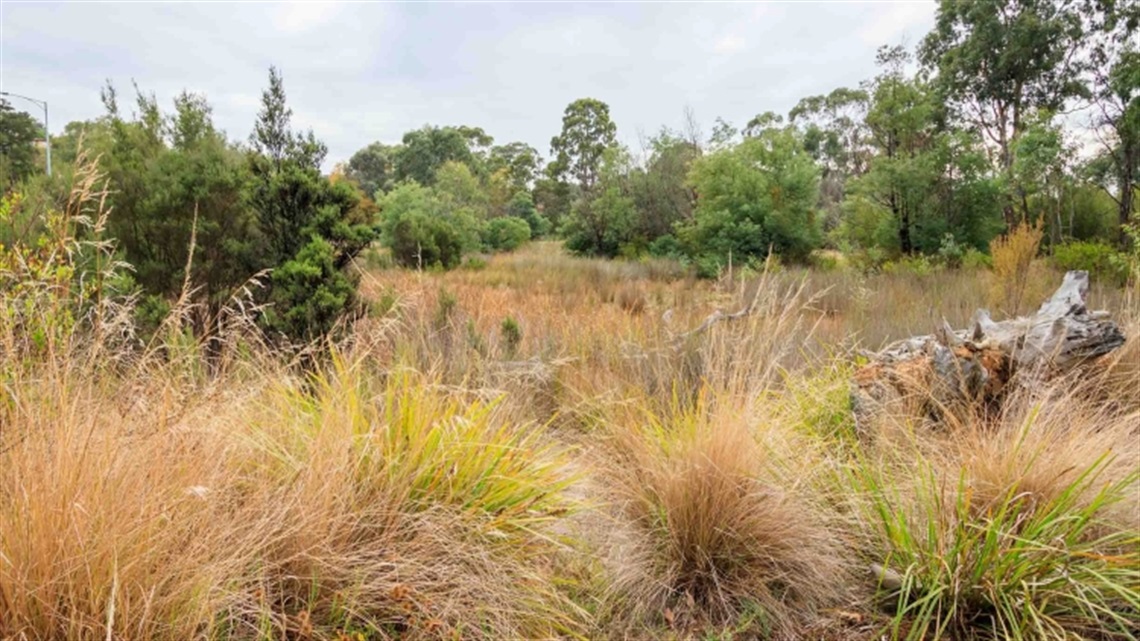Warringal Parklands

This large 35.50 hectare reserve borders by the Yarra River to the south and east. It is one of many interconnected parks and reserves located along this section of the the river that provide many sport and recreational facilities for walkers, cyclists, dog owners, bird watchers and families. It has 2 ovals and tennis courts.
Dogs and cats are prohibited from entering the environmentally sensitive swamplands.
A highlight of the area for families is Possum Hollow, a large regional playground that is fenced. It has a flying fox, as well as BBQs and picnic facilities.
The reserve is managed by Banyule's Bushland Management Department with assistance from local volunteers. If you are interested in helping out, join the Warringal Conservation Society.
History
In 1853, Joseph Hawdon subdivided this area, including Sills Bend, into small blocks that were bought and used for orchards and market gardens. The Sills family bought the land in the late 1850s and it became known as Sills Bend. Between the late 1850s and 1926, Sills Bend was used as an orchard for quince, pear, mulberry, cherry and plum trees, some of which still stand today. In 1927, the land was sold to the local council for park land.
Flora and fauna
The reserve has are 6 vegetation communities: floodplain riparian woodland, creekline grassy woodland, floodplain riparian woodland, plains grassy woodland, wetland formation and aquatic herbfield.
Beverley Road Wetland was created to remove dense weeds. It receives water from a small catchment area of nearby road run-off.
There are many river red gums, red iron barks and swamp gums growing along the Main Yarra Trail and on the Yarra River bank. They provide habitat and food for many different species.
Many native bird species use Warringal Parklands, including grey goshawks, black-shouldered kites, tawny frogmouths and whistling kites. Yellow-tailed black cockatoos are often sighted, as are wombats, wallabies, platypus, echidnas and kangaroos.
Details about the significance of the flats can be found in our Warringal Parklands and Banyule Flats Ecological and Conservation Values Assessment(PDF, 7MB).
Fauna
| Common name |
Scientific name |
|
Australian wood duck
|
Chenonetta jubata
|
|
Brushtail possum
|
Trichosurus vulpecula |
|
Common wombat
|
Vombatus ursinus
|
|
Eastern grey kangaroo
|
Macropus giganteus
|
|
Laughing kookaburra
|
Dacelo novaeguineae
|
|
Rainbow lorikeet
|
Trichoglossus moluccanus
|
|
Tiger snake
|
Notechis scutatus
|
|
Yellow-tailed black cockatoo
|
Calyptorhynchus funereus
|
Flora
| Scientific name |
Common name |
|
Acacia melanoxylon
|
Blackwood
|
|
Brachyscome multifida
|
Cut-leaf daisy
|
|
Bursaria spinosa
|
Sweet bursaria
|
|
Carex tereticaulis
|
Poong'ort
|
|
Chrysocephalum apiculatum
|
Common everlasting
|
|
Eucalyptus camaldulensis
|
River red gum
|
|
Lomandra longifolia
|
Spiny-headed mat rush
|
|
Lythrum salicaria
|
Purple loostrife
|
|
Melaleuca ericifolia
|
Swamp paperbark
|
Location
2 Beverley Road, Heidelberg 3084 View Map
-37.7563569,145.0746168
2 Beverley Road ,
Heidelberg 3084
2 Beverley Road ,
Heidelberg 3084
Warringal Parklands